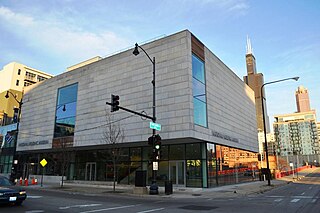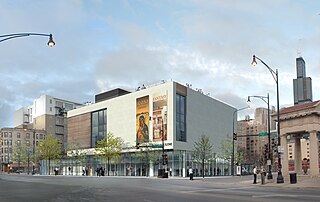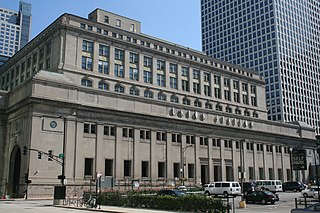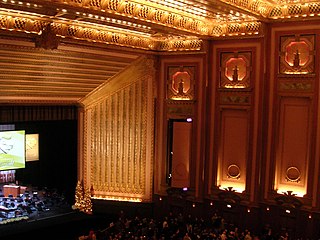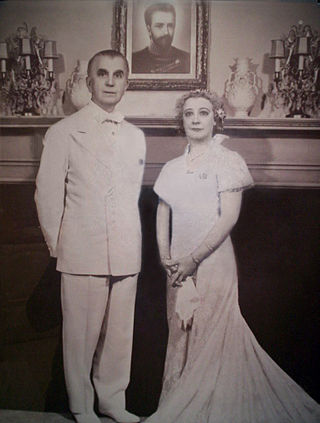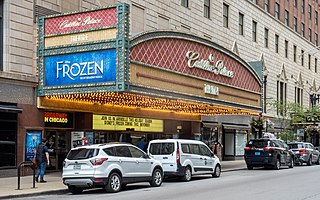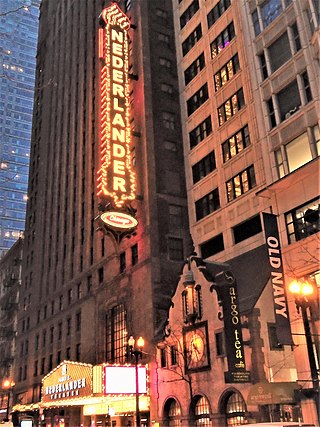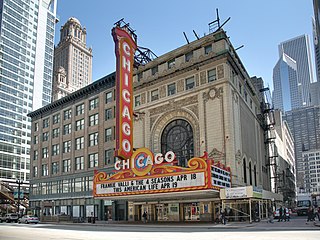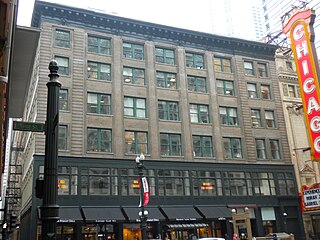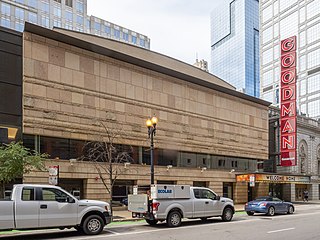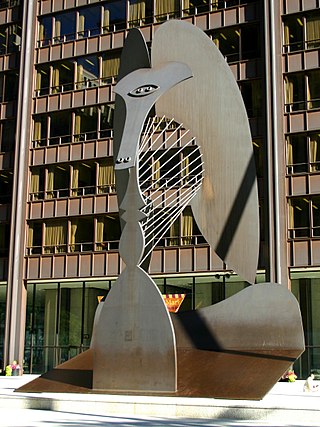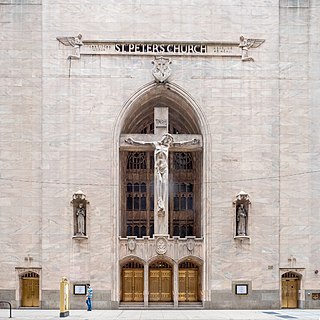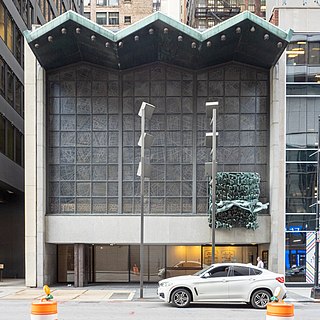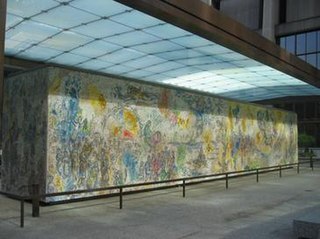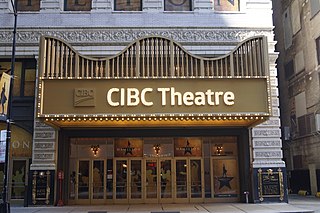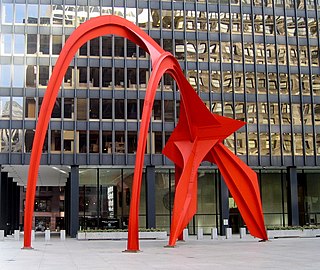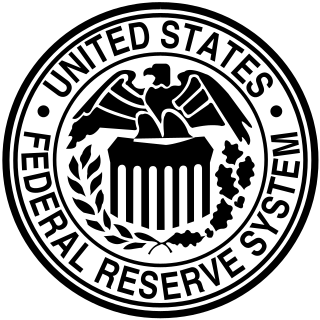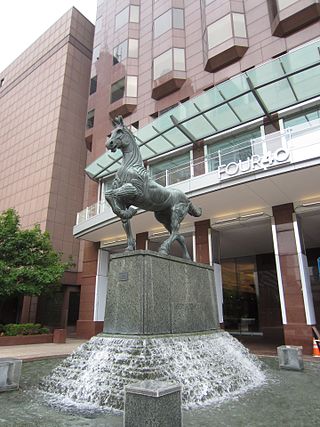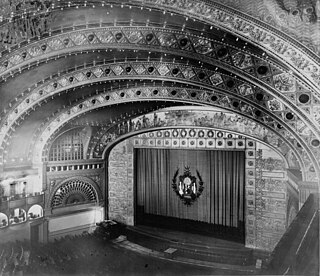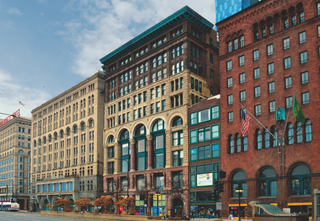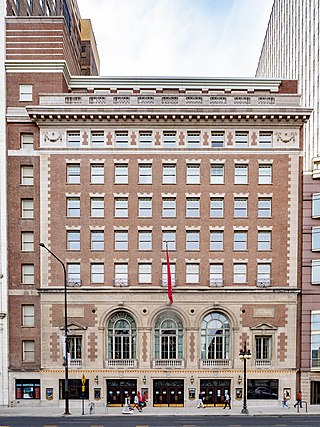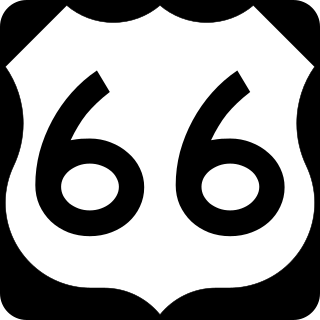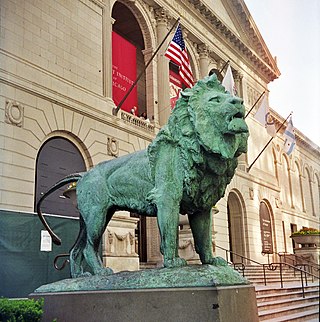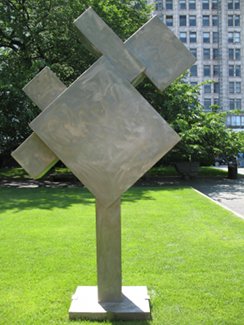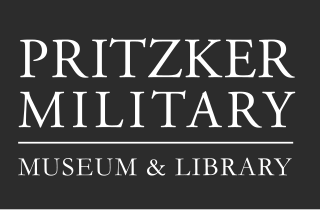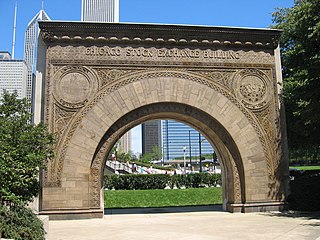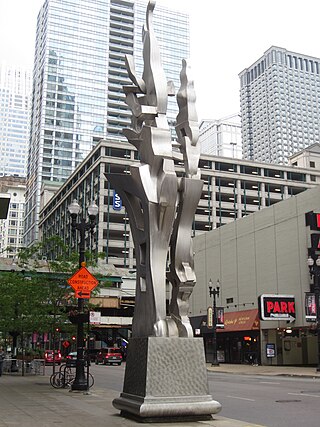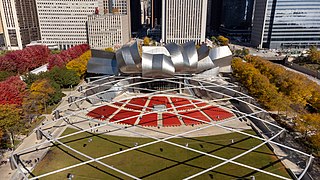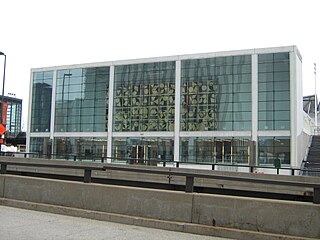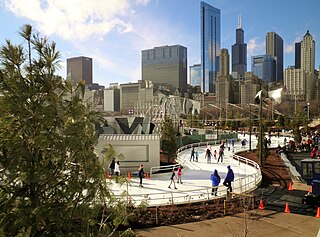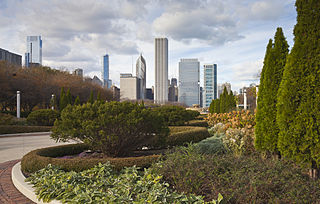Self-guided Sightseeing Tour #7 in Chicago, United States
Legend
Tour Facts
12.3 km
1018 m
Experience Chicago in United States in a whole new way with our free self-guided sightseeing tour. This site not only offers you practical information and insider tips, but also a rich variety of activities and sights you shouldn't miss. Whether you love art and culture, want to explore historical sites or simply want to experience the vibrant atmosphere of a lively city - you'll find everything you need for your personal adventure here.
Activities in ChicagoIndividual Sights in ChicagoSight 1: National Hellenic Museum
The National Hellenic Museum is the second oldest American institution dedicated to displaying and celebrating the cultural contributions of Greeks and Greek-Americans. Formerly known as the Hellenic Museum and Cultural Center, the National Hellenic Museum is located in Chicago’s Greektown, at the corner of Halsted and Van Buren Streets. The National Hellenic Museum has recently undergone a modernization program that cumulated in the museum moving to its current building in December 2011. The official opening of the NHM took place on December 10th, 2011 and proved to be a marked event within the Greek community of Chicago.
Sight 2: Greektown
Greektown is a social and dining district, located on the Near West Side of Chicago. Today, Greektown consists mostly of restaurants and businesses, although a cultural museum and an annual parade and festival still remain in the neighborhood.
Sight 3: Chicago Union Station
Chicago Union Station is an intercity and commuter rail terminal located in the West Loop neighborhood of the Near West Side of Chicago. Amtrak's flagship station in the Midwest, Union Station is the terminus of eight national long-distance routes and eight regional corridor routes. Six Metra commuter lines also terminate here.
Sight 4: Civic Opera House
The Civic Opera House, also called Lyric Opera House is an opera house located at 20 North Wacker Drive in Chicago. The Civic's main performance space, named for Ardis Krainik, seats 3,563, making it the second-largest opera auditorium in North America, after the Metropolitan Opera House. Built for the Chicago Civic Opera, it has been home to the Lyric Opera of Chicago since 1954 and the Joffrey Ballet since 2021. It is part of a complex with a 45-story office tower and two 22-story wings, known as the Civic Opera Building that opened November 4, 1929 and features Art Deco details.
Sight 5: I Am Temple
The I AM Movement, also referred to as the I AM Temple, is the original ascended master teachings neo-Theosophical religious movement founded in the early 1930s by Guy Ballard (1878–1939) and his wife Edna Anne Wheeler Ballard (1886–1971) in Chicago, Illinois. It is an offshoot of theosophy and a major precursor of several New Age religions including the Church Universal and Triumphant.
Sight 6: Cadillac Palace Theatre
The Cadillac Palace Theatre is operated by Broadway In Chicago, a Nederlander company and seats 2,344. It is located at 151 West Randolph Street in the Chicago Loop area. Opened in 1926 and designed largely in the French Baroque style, it is connected to the historic Eitel Brothers' Bismarck Hotel, and was for a time known as the, Bismarck Theatre. Cadillac has held the naming rights since 1999.
Sight 7: Monument With Standing Beast
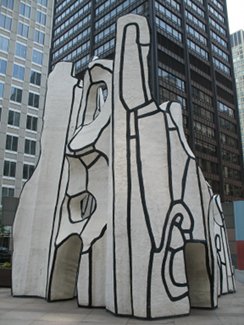
Monument with Standing Beast is a sculpture by Jean Dubuffet previously located in front of the Helmut Jahn designed James R. Thompson Center in the Loop community area of Chicago, Illinois. Its location was across the street from Chicago City Hall to the South and diagonal across the street from the Daley Center to the southeast. It is a 29-foot (8.8 m) white fiberglass work of art. The piece is a 10-ton or 20,000 pounds (9,100 kg) work. It was unveiled on November 28, 1984. It was dismantled in the spring of 2024 and was bound for a state warehouse.
Sight 8: James M. Nederlander Theatre
The James M. Nederlander Theatre is a theater located at 24 West Randolph Street in the Loop area of downtown Chicago, Illinois. Previously known as the Oriental Theatre, it opened in 1926 as a deluxe movie palace and vaudeville venue. Today the Nederlander presents live Broadway theater and is operated by Broadway In Chicago, currently seating 2,253.
Sight 9: Chicago Theatre
The Chicago Theatre, originally known as the Balaban and Katz Chicago Theatre, is a landmark theater located on North State Street in the Loop area of Chicago, Illinois. Built in 1921, the Chicago Theatre was the flagship for the Balaban and Katz (B&K) group of theaters run by A. J. Balaban, his brother Barney Balaban and partner Sam Katz. Along with the other B&K theaters, from 1925 to 1945 the Chicago Theatre was a dominant movie theater enterprise. Currently, Madison Square Garden, Inc. owns and operates the Chicago Theatre as a 3600 seat performing arts venue for stage plays, magic shows, comedy, speeches, sporting events and popular music concerts.
Sight 10: Page Brothers Building
The north facade facing Lake Street of the Page Brothers Building, 177-91 North State Street in the Loop community area of Chicago in Cook County, Illinois, United States, features the city's last remaining cast iron front. Although this example was built after the 1871 Great Chicago Fire, iron facades were a common construction technique before the fire, and many of the iron fronts melted due to the intense heat. The original 5 story structure was built by John Mills Van Osdel, a prominent post-Fire architect known for buildings in the Jewelers Row District and Old Main at the University of Arkansas. In 1902, the west facade facing State Street was remodeled and another floor was added, reflecting the reorientation of commercial activity from Lake to State Street.
Sight 11: Owen Bruner Goodman Theatre
The Harris and Selwyn Theaters are twin theatres located in the Loop community area of Chicago, Illinois. They were built by Sam H. Harris and Archie and Edgar Selwyn. They were designated a Chicago Landmark on March 31, 1983. They have been redesigned by the Goodman Theatre, which is located in them.
Sight 12: Albert Ivar Goodman Theatre
Goodman Theatre is a professional theater company located in Chicago's Loop. A major part of the Chicago theatre scene, it is the city's oldest currently active nonprofit theater organization. Part of its present theater complex occupies the landmark Harris and Selwyn Theaters property.
Sight 13: Chicago Picasso
The Chicago Picasso is an untitled monumental sculpture by Pablo Picasso in Daley Plaza in Chicago, Illinois. The 1967 installation of The Picasso, "precipitated an aesthetic shift in civic and urban planning, broadening the idea of public art beyond the commemorative."
Sight 14: Miro's Chicago
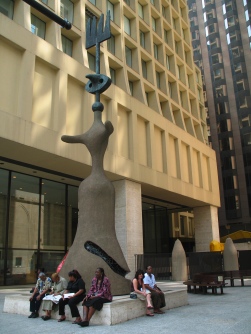
Miró's Chicago is a sculpture by Joan Miró in Brunswick Plaza, Chicago, United States. It is 39 feet (12 m) tall, and is made of steel, wire mesh, concrete, bronze, and ceramic tile.
Sight 15: St. Peter's Church
St. Peter's in the Loop, on Madison between LaSalle and Clark in Chicago, Illinois, was built in 1953. It was designed by architects Vitzthum & Burns.
Sight 16: Loop Synagogue
The Chicago Loop Synagogue is an Orthodox Jewish synagogue, located at 16 South Clark Street, in the Loop precinct of Chicago, Illinois, in the United States. Completed in 1958, the synagogue is renowned for a stained glass artwork by Abraham Rattner.
Sight 17: Four Seasons
Four Seasons is a 1974 mosaic by Marc Chagall that is located in Chase Tower Plaza in the Loop district of Chicago, Illinois. The mosaic was a gift to the City of Chicago by Frederick H. Prince ; it is wrapped around four sides of a 70 feet (21 m) long, 14 feet (4.3 m) high, 10 feet (3.0 m) wide rectangular box, and was dedicated on September 27, 1974. It was renovated in 1994 and a protective glass canopy was installed.
Sight 18: CIBC Theatre
CIBC Theatre is a performing arts theater located at 18 West Monroe Street in the Loop area of downtown Chicago. It is operated by Broadway In Chicago, part of the Nederlander Organization. Opened in 1906 as the Majestic Theatre, it currently seats 1,800 and for many years has presented Broadway shows. In its early years, the theater presented vaudeville celebrity acts.
Sight 19: Calder's Flamingo
Flamingo, a sculpture by American artist Alexander Calder, is a 53-foot-tall (16 m) stabile located in the Federal Plaza in front of the Kluczynski Federal Building in Chicago, Illinois, United States. It was commissioned by the United States General Services Administration and was unveiled in 1974, although Calder's signature on the sculpture indicates it was constructed in 1973.
Sight 20: Money Museum
The Federal Reserve Bank of Chicago is one of twelve Federal Reserve Banks that, along with the Federal Reserve Board of Governors, make up the Federal Reserve System, the United States' central bank. The Chicago Fed serves the Seventh District, which encompasses the northern portions of Illinois and Indiana, southern Wisconsin, the Lower Peninsula of Michigan, and the state of Iowa. In addition to participation in the formulation of monetary policy, each Reserve Bank supervises member banks and bank holding companies, provides financial services to depository institutions and the U.S. government, and monitors economic conditions in its District.
Sight 21: San Marco II
San Marco II is an outdoor 1986 bronze sculpture of a stallion by Italian artist Ludovico de Luigi, installed in Chicago's The Plaza, FOUR40, in the U.S. state of Illinois.
Sight 22: Auditorium Theatre
The Auditorium Theatre is a music and performance venue located in the Auditorium Building at 50 E. Ida B. Wells Drive in Chicago, Illinois. Inspired by the Richardsonian Romanesque Style of architect Henry Hobson Richardson, the building was designed by Dankmar Adler and Louis Sullivan and completed in 1889. The Chicago Symphony Orchestra performed in the theatre until 1904 as well as the Chicago Grand Opera Company and its successors the Chicago Opera Association and Chicago Civic Opera until its relocation to the Civic Opera House in 1929. The theater was home to the Joffrey Ballet from 1998 until 2020. It currently hosts a variety of concerts, musicals, performances, and events. Since the 1940s, it has been owned by Roosevelt University and since the 1960s it has been refurbished and managed by an independent non-profit arts organization.
Sight 23: Fine Arts Building
The ten-story Fine Arts Building, formerly known as the Studebaker Building, is located at 410 S Michigan Avenue across from Grant Park in Chicago in the Chicago Landmark Historic Michigan Boulevard District. It was built for the Studebaker company in 1884–1885 by Solon Spencer Beman, and extensively remodeled in 1898, when Beman removed the building's eighth (top) story and added three new stories. Studebaker constructed the building as a carriage sales and service operation with manufacturing on upper floors. The two granite columns at the main entrance, 3 feet 8 inches (1.12 m) in diameter and 12 feet 10 inches (3.91 m) high, were said to be the largest polished monolithic shafts in the country. The interior features Art Nouveau motifs and murals by artists such as Martha Susan Baker, Frederic Clay Bartlett, Oliver Dennett Grover, Frank Xavier Leyendecker, and Bertha Sophia Menzler-Peyton dating from the 1898 renovation. In the early 20th century, the Kalo Shop and Wilro Shop, firms owned by women and specializing in Arts and Crafts items, were established in the renamed Fine Arts Building.
Sight 24: Chicago L
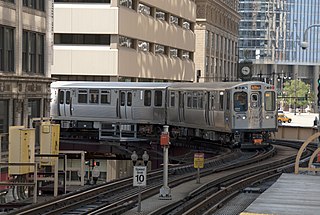
The Chicago "L" is the rapid transit system serving the city of Chicago and some of its surrounding suburbs in the U.S. state of Illinois. Operated by the Chicago Transit Authority (CTA), it is the fourth-largest rapid transit system in the United States in terms of total route length, at 102.8 miles (165.4 km) long as of 2014, and the third-busiest rapid transit system in the United States after the New York City Subway and the Washington Metro. As of January 2024, the "L" had 1,480 rail cars operating across eight different routes on 224.1 miles of track. CTA trains make about 1,888 trips each day servicing 146 train stations. In 2023, the system had 117,447,000 rides, or about 400,000 per weekday in the second quarter of 2024.
Sight 25: Symphony Center
Symphony Center is a music complex located at 220 South Michigan Avenue in the Loop area of Chicago, Illinois. Home to the Chicago Symphony Orchestra (CSO); Chicago Symphony Chorus; Civic Orchestra of Chicago; and the Institute for Learning, Access, and Training; Symphony Center includes the 2,522-seat Orchestra Hall, which dates from 1904; Buntrock Hall, a rehearsal and performance space named for the CSO trustee and benefactor Dean L. Buntrock; Grainger Ballroom, an event space overlooking Michigan Avenue and the Art Institute of Chicago; a public multi-story rotunda; Forte, a restaurant and café; and administrative offices. In June 1993, plans to significantly renovate and expand Orchestra Hall were approved and the $110 million project resulting in Symphony Center, completed in 1997.
Sight 26: Historical Route 66 Starting Place
U.S. Route 66 was a United States Numbered Highway in Illinois that connected St. Louis, Missouri, and Chicago, Illinois. The historic Route 66, the Mother Road or Main Street of America, took long distance automobile travelers from Chicago to Southern California. The highway had previously been Illinois Route 4 and the road has now been largely replaced with Interstate 55 (I-55). Parts of the road still carry traffic and six separate portions of the roadbed have been listed on the National Register of Historic Places.
Sight 27: Begin Route 66
U.S. Route 66 or U.S. Highway 66 was one of the original highways in the United States Numbered Highway System. It was established on November 11, 1926, with road signs erected the following year. The highway, which became one of the most famous roads in the United States, ran from Chicago, Illinois, through Missouri, Kansas, Oklahoma, Texas, New Mexico, and Arizona before terminating in Santa Monica in Los Angeles County, California, covering a total of 2,448 miles (3,940 km).
Sight 28: Lion on the prowl
Lions is a pair of 1893 bronze sculptures by Edward Kemeys, installed outside of the main entrance to the Art Institute of Chicago in Chicago, Illinois. The sculptures are well-recognized public artworks.
Sight 29: Cubi VII
Cubi VII is a sculpture by David Smith in the Art Institute of Chicago North Stanley McCormick Memorial Court north of the Art Institute of Chicago Building in the Loop community area of Chicago, Illinois.
Sight 30: Pritzker Military Museum & Library
The Pritzker Military Museum & Library is a non-profit museum and a research library for the study of military history on Michigan Avenue in Chicago, Illinois. The institution was founded in 2003, and its specialist collections include material relating to Winston Churchill and war-related sheet music.
Wikipedia: Pritzker Military Museum & Library (EN), Website, Website
Sight 31: Chicago Stock Exchange Arch
The Chicago Stock Exchange Arch is a piece of historical architecture located in Chicago, Illinois, United States. Installed outside of the Art Institute of Chicago, it is one of the few surviving large-scale fragments from the Chicago Stock Exchange building designed in 1893.
Sight 32: Lurie Garden
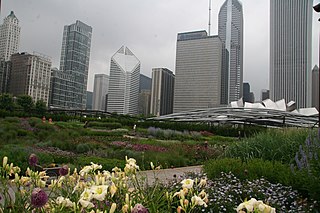
Lurie Garden is a 2.5-acre (10,000 m2) garden located at the southern end of Millennium Park in the Loop area of Chicago in Cook County, Illinois, United States. Designed by GGN, Piet Oudolf, and Robert Israel, it opened on July 16, 2004. The garden is a combination of perennials, bulbs, native prairie grasses, shrubs and trees. It is the featured nature component of the world's largest green roof. The garden cost $13.2 million and has a $10 million endowment for maintenance and upkeep. It was named after Ann Lurie, who donated the $10 million endowment. For visitors, the garden features guided walks, lectures, interactive demonstrations, family festivals and picnics.
Sight 33: Millennium Park
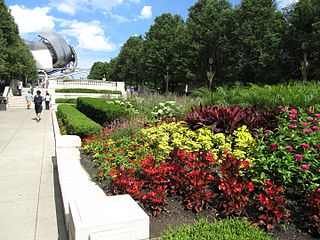
Millennium Park is a public park located in the Loop community area of Chicago, operated by the Chicago Department of Cultural Affairs. The park, opened in July 2004, is a prominent civic center near the city's Lake Michigan shoreline that covers a 24.5-acre (9.9 ha) section of northwestern Grant Park. Featuring a variety of public art, outdoor spaces and venues, the park is bounded by Michigan Avenue, Randolph Street, Columbus Drive and East Monroe Drive. In 2017, Millennium Park was the top tourist destination in Chicago and in the Midwest, and placed among the top ten in the United States with 25 million annual visitors.
Sight 34: Cloud Gate
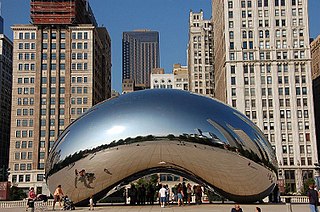
Cloud Gate is a public sculpture by Indian-born British artist Anish Kapoor, that is the centerpiece of Grainger Plaza at Millennium Park in the Loop community area of Chicago. Constructed between 2004 and 2006, the sculpture is nicknamed "The Bean" because of its shape, a name Kapoor later grew fond of. Made up of 168 stainless steel plates welded together, its reflective and highly polished exterior has no visible seams. It measures 33 by 66 by 42 feet, and weighs 110 short tons. The sculpture and its plaza are located above Park Grill, between the Chase Promenade and McCormick Tribune Plaza & Ice Rink.
Sight 35: We Will Chicago
We Will is an outdoor 2005 welded stainless steel sculpture by Richard Hunt, installed in Chicago, in the U.S. state of Illinois.
Sight 36: Cow
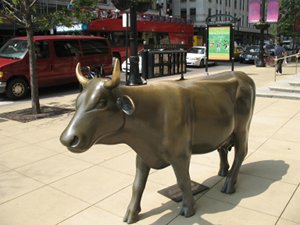
CowParade is an international public art exhibit that has featured in major world cities. Fiberglass sculptures of cows are decorated by local artists, and distributed over the city centre, in public places such as train stations, important avenues, and parks. They often feature artwork and designs specific to local culture, as well as city life and other relevant themes.
Sight 37: Jay Pritzker Pavilion
Jay Pritzker Pavilion, also known as Pritzker Pavilion or Pritzker Music Pavilion, is a bandshell in Millennium Park in the Loop community area of Chicago in Cook County, Illinois, United States. It is located on the south side of Randolph Street and east of the Chicago Landmark Historic Michigan Boulevard District. The pavilion was named after Jay Pritzker, whose family is known for owning Hyatt Hotels. The building was designed by architect Frank Gehry, who accepted the design commission in April 1999; the pavilion was constructed between June 1999 and July 2004, opening officially on July 16, 2004.
Sight 38: Joan W. and Irving B. Harris Theater for Music and Dance
The Joan W. and Irving B. Harris Theater for Music and Dance is a 1,499-seat theater for the performing arts located along the northern edge of Millennium Park on Randolph Street in the Loop community area of Chicago in Cook County, Illinois, US. The theater, which is largely underground due to Grant Park-related height restrictions, was named for its primary benefactors, Joan and Irving Harris. It serves as the park's indoor performing venue, a complement to Jay Pritzker Pavilion, which hosts the park's outdoor performances.
Sight 39: Maggie Daley Park
Maggie Daley Park is a 20-acre (81,000 m2) public park in the Loop community area of Chicago operated by the Chicago Park District. It is near the Lake Michigan shoreline in northeastern Grant Park where Daley Bicentennial Plaza previously stood. Maggie Daley Park, like its predecessor, is connected to Millennium Park by the BP Pedestrian Bridge. Designed by landscape architect Michael Van Valkenburgh, the park had its ceremonial ribbon cutting on December 13, 2014, and is named for Maggie Daley, the former first lady of the city who died of cancer in 2011. The park was almost entirely remade with multiple new features including a new field house designed by Valerio Dewalt Train, an ice skating ribbon, climbing walls, landscaping and children's playground. An older section of the park maintains a garden dedicated earlier to honor cancer survivors. The park is bounded by Randolph Street, Monroe, Columbus and Lake Shore Drives. Construction took 2 years and cost $60 million, including rebuilding an underground parking lot.
Sight 40: Grant Park
Grant Park is a large urban park in the Loop community area of Chicago, Illinois. Located within the city's central business district, the 319-acre (1.29 km2) park's features include Millennium Park, Buckingham Fountain, the Art Institute of Chicago, and the Museum Campus.
Share
How likely are you to recommend us?
Disclaimer Please be aware of your surroundings and do not enter private property. We are not liable for any damages that occur during the tours.
GPX-Download For navigation apps and GPS devices you can download the tour as a GPX file.
